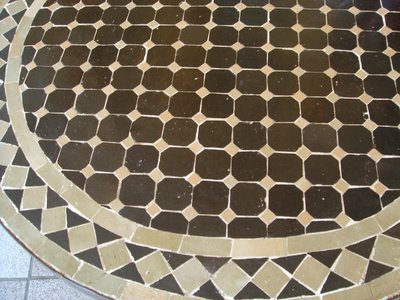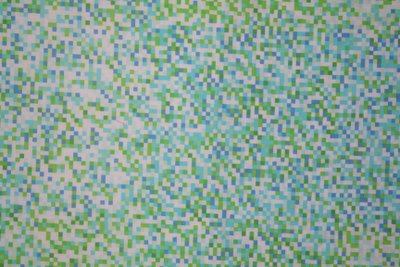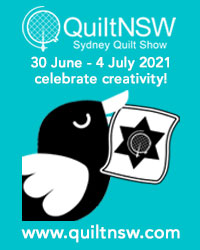 My second attempt at weaving two fat quarters went a bit better using a heavy duty water soluble stabiliser. It was a bit sticky on the bed of the sewing machine when I first started sewing through the layers, but that didn't last long. No gunk on the needle althrough there was a bit of fluff around the bobbin case. I'll have to remember to clean it out after using this water soluble stuff.
My second attempt at weaving two fat quarters went a bit better using a heavy duty water soluble stabiliser. It was a bit sticky on the bed of the sewing machine when I first started sewing through the layers, but that didn't last long. No gunk on the needle althrough there was a bit of fluff around the bobbin case. I'll have to remember to clean it out after using this water soluble stuff.Here's a close-up of the front ...
 And a close up of the back ...
And a close up of the back ... When I dunked it into cold water it got slimy for a minute and then dissolved away cleanly. I squeezed it out in a towel to get rid of the extra water and hung it up to dry. After ironing, it was a bit scrunched up around some of the stitching but that added some nice texture to the finished fabric.
When I dunked it into cold water it got slimy for a minute and then dissolved away cleanly. I squeezed it out in a towel to get rid of the extra water and hung it up to dry. After ironing, it was a bit scrunched up around some of the stitching but that added some nice texture to the finished fabric. One lesson for next time: be sure to weave strips so that there aren't any gaps in the corners between the strips. I've got a couple but don't know if the wadding will migrate through or not.
One lesson for next time: be sure to weave strips so that there aren't any gaps in the corners between the strips. I've got a couple but don't know if the wadding will migrate through or not.If it does, I can always write a book with my new embellishment technique and going on the international lecture circuit.































